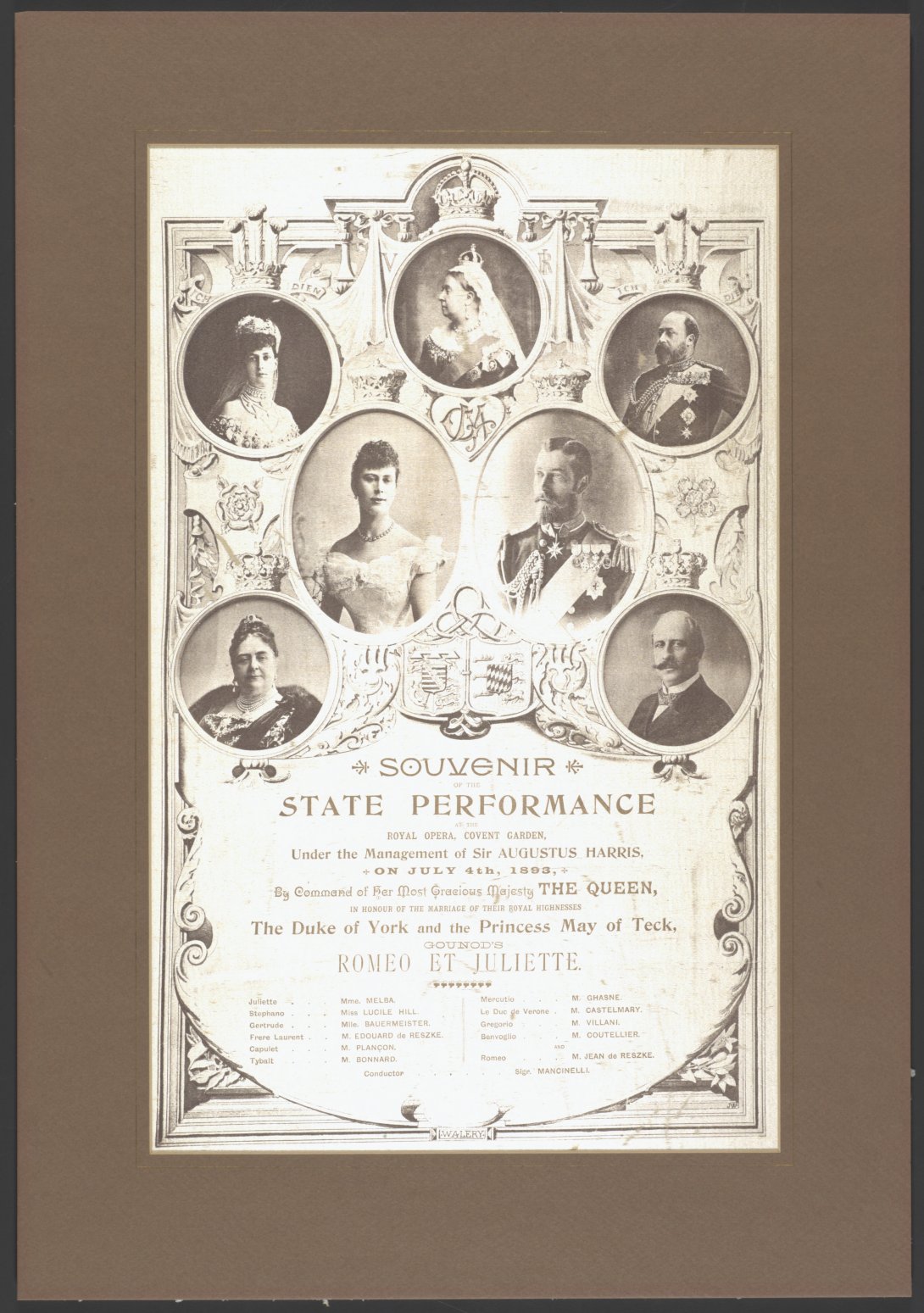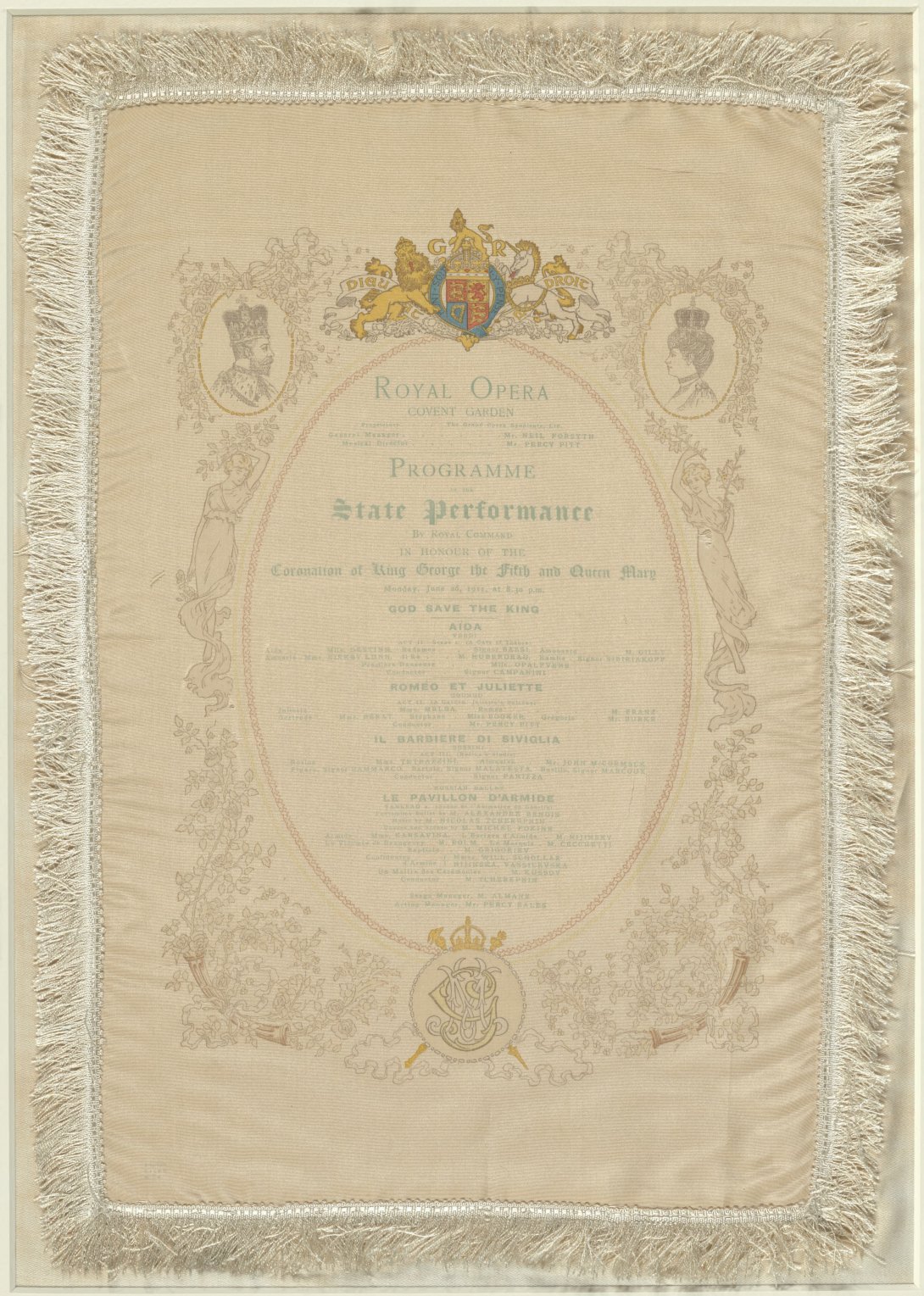By Yole Daniels
The ‘AusStagers’, our small team of Library volunteers, have travelled many nooks, crannies and even highways during our five years entering data from the Library’s PROMPT Collection into AusStage and linking it to the wonderful Trove.
If you haven’t discovered AusStage yet, you’re missing out on the digital humanities platform hosted by Flinders University that preserves and showcases live performance in Australia – plays, musicals, burlesque, dance, corroboree, circus and more.
Our AusStagers working group has focussed on the Library’s holdings of music and theatre ephemera and the J. C. Williamson Collections. We started with paper theatre programs and, during the COVID-19 shutdown at the Library, turned to Trove-digitised items in the PROMPT collection. We have enough material to work with that will keep us occupied for years to come!
We’ve been delighted to discover the famous and the not so famous.
The Library holds an extensive Dame Nellie Melba Collection, and celebrated in 2008 with a Friends event following the acquisition of the Melba Conservatorium Collection from Melbourne, records of her life collected over more than 100 years. But we weren’t expecting to come across the beautifully ornate, cream silk programs from two of her performances in Covent Garden where, as ‘Covent Garden’s prima donna’, she boasted her own dressing room.
In the 4 July 1893 Souvenir of the State Performance at the Royal Opera, Covent Garden, in Honour of the Marriage of Their Royal Highnesses the Duke of York and Princess Mary of Teck – Gounod’s Romeo et Juliette, Melba was Juliette.

In the State Performance by Royal Command in Honour of the Coronation of King George the Fifth and Queen Mary program from 26 June 1911, Melba again performed the role of Juliette.

The Melba story is well known. Melbourne-born Helen Porter Mitchell (1861–1931) left Australia in 1886 to train in Paris, where she adopted the stage name Melba, a contraction of her birth city, and emphasising her ‘Australian-ness’. Her vocal range over three octaves was exquisite. She became internationally renowned and enjoyed triumphal returns to Australia, including singing at the opening of Parliament House in 1927. Her fame is etched into Australian history. AusStage records many of Dame Nellie’s performances and many ‘Toasts to Melba’ as befits ‘our greatest daughter’ and ‘our queen of song’ as she was known. We added to her superbly travelled highway.
However, it’s not just the famous who are now AusStager favourites. We had never heard of Tasmanian-born Emma and Clelia Howson whose international fame preceded that of Melba and who died around the same time as Dame Nellie. We were introduced to them through the theatre programs of English star Lady Don.
The sisters were born in Van Diemen’s Land in 1844 and 1845, their father Frank having been ‘recruited’ to there in 1842 by entertainer Anne Clarke, who had arrived in 1834 and who was the first woman to manage an Australian theatre, the Theatre Royal in Hobart. The Howsons were from talented operatic stock. Frank’s sister was the English operatic contralto Emma Albertazzi, and Frank is credited with introducing opera to the colony. He moved his family to Sydney in 1845 and later took every opportunity to highlight the talents of his young daughters as singers, actresses and musicians in opera, operetta, classical music and burlesque as they toured the colonies.
We first came across Emma and Clelia when we entered PROMPT material on Lady Emilia Don and her ‘greatest galaxy of talent’ in the mid 1860s. It was Lady Don’s second tour of Australia. Frank Howson had worked with her during her first tour in 1861–62, during which her Baronet husband, the actor Sir William Don, had died in Hobart aged 37, collapsing after a performance where he played Queen Elizabeth in the burlesque Kenilworth.
Her Ladyship’s is another story in itself. The Library holds a collection of some 60 theatre broadsides relating to Lady Don’s extensive international and Australian tours. In 1864–65 she was back solo in Australia. In Tasmania she played to large audiences, including vice regal patrons, often taking ‘saucy’, ‘tantalising’ roles and male parts. AusStage lists her as ‘actor’ and ‘gender cross dresser’.
In Tasmania, she was supported by many well-known Tasmanian actresses such as the Howson sisters who had moved back to Tasmania, Marie Carandini’s daughters, the Stewart sisters and Hattie Shepparde to name a few. The Howson sisters and their father played major roles alongside Lady Don. A performance of Little Treasure! was ‘for the benefit of the Misses Emma and Clelia Howson and Mr. F. Howson’.

The Howson sisters each had impressive vocal ranges: Emma was said to have the better voice of the two ‘nightingales’; Clelia was perhaps the better actress. Both regularly took on male roles and pushed boundaries of gender stereotypes.
Shortly after their season with Lady Don in Tasmania, the Howsons left for the United States. It was 1866, arguably the first time Australia had ‘exported’ famous, Australian-born-and-bred ‘stars’. They preceded Melba overseas by 20 years.
Emma went on to have a long and successful career. At Niblo’s Garden on Broadway in 1871 she sang at the farewell benefit for J. C. Williamson. She studied in Milan and had seasons in Italy, Malta, Ireland and England, where she had her most acclaimed role as Josephine in the first production of HMS Pinafore in London in 1878.
Emma retired from the stage in the 1890s and taught voice for many years. She died in 1928. Clelia, whose fame had faded earlier, died in 1931, the same year as Dame Nellie.
Researching for AusStage led us to Nicole Anae’s work on Tasmanian actresses in the nineteenth century. She writes about women, like Emma and Clelia, of great talent and enterprise who strongly influenced Tasmanian theatre, pride and cultural identity. She credits the Howson sisters as ‘significant conduits of social change’ and shedding ‘important light on the social power of colonial actresses during the nineteenth century indicating that women’s cultural activity was not as circumscribed as some accounts would have us believe’. See Nicole Anae A Crowned and Selected Band of Women: Tasmanian Actress/Celebrities of the Nineteenth Century & “Home-grown Identity” PhD thesis University of Tasmania, 2005.
The four near-contemporaries, each a ‘star’ in the nineteenth and early twentieth centuries, are remembered very differently today. Dame Nellie is immortalised on our $100 note, has suburbs and a dessert named after her, and her work is still widely available. Lady Don and the Howson sisters are largely forgotten but we AusStagers have stumbled across them and have happily added to their fascinating stories and aspects of Tasmania’s long theatre history through our involvement with AusStage.
The addition of the AusStage database and the J.C. Williamson Ltd Distributed Collection to the UNESCO Australian Memory of the World Register in 2021 will hopefully lead to more people learning of these remarkable women.